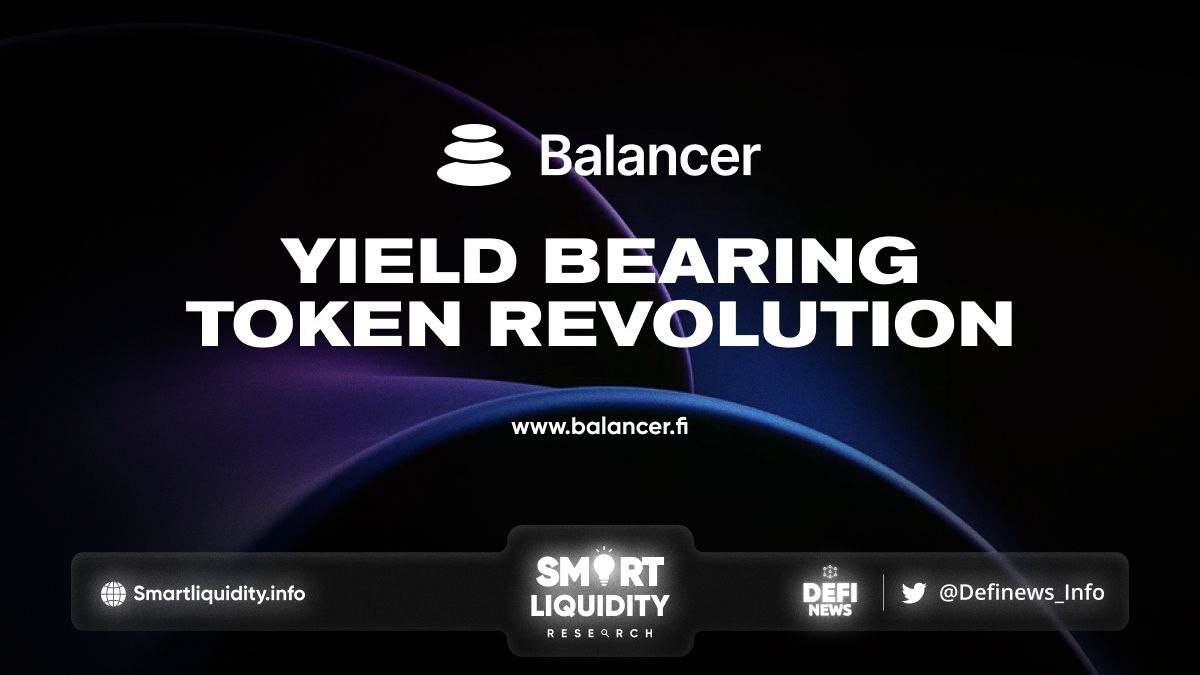Balancer Yield-Bearing Token Revolution


Balancer yield-bearing token revolution. Learn how users can earn further yields on staked ETH, benefiting both projects and the Protocol.
The Ethereum Upgrade or “Merge” is on the horizon, eliminating the need for energy-intensive mining and instead will secure the network using staked ETH. There’s a surplus of coverage surrounding one of the most significant upgrades in the history of Ethereum. So a quick refresh is sufficient.
Staking Post Merge
While faster transaction speeds and lower energy consumptions are benefits of the awaited Merge, staking is one of the most anticipated features of the upgraded Ethereum network.
Current requirements to stake are pretty steep at 32 ETH. However, there are several projects, such as Rocket Pool and Lido Finance, that are creating solutions for users with fewer ETH to be able to participate.
The ETH 2.0 upgrade was targeted to occur in June with community projections of 12% to 15% APYs for staking post Merge. The date has since changed, with metrics pointing to slightly lower staking yields once the Merge takes place.
11.5 million ETH, or 9.5% of Ether’s circulating supply, is lock within the staking contract. While the growth of the amount of ETH staked makes the network more secure, it also means that the rewards received for protecting the network decrease proportionally.
Factors affecting staking APYs post Merge
- Amount of ETH staked
- Ethereum fees
- Percentage of fees burnt
Wrapping stETH creates a DeFi-compatible version of the stETH token, which allows for easier integrations with DeFi protocols, including Balancer. Through Balancer, users can provide wstETH as liquidity to the respective Pool to earn trading fees and additional incentives.
For context, Lido is the largest liquid staking protocol. By allowing traders and LPs to tap into Lido’s $6.32 Billion TVL. Balancer is a top destination for liquid-staked ETH liquidity, facilitating between Ether and Staked Ether to offer liquidity for stakers securing the Ethereum Network.
Recently, Lido joined the L2 ’22 Summer by launching stETH on Layer 2 networks Optimism and Arbitrum. Users can stake ETH with lower fees and use stETH assets across DeFi.
Balancer’s technology is deployed across L2s, including Arbitrum and Optimism, further strengthening its offerings for liquid-staked ETH liquidity and is equipped to support Lido’s launch of wstETH on Layer 2’s.
How exactly can Balancer users earn further yields on staked ETH?
Through MetaStable Pools
MetaStable Pools are great for tokens with highly correlated, but not hard-pegged, prices. Because of this, MetaStable Pools are especially well suited to handle pegged tokens that gradually accumulate fees.
Rate Providers
Wrapping rebasing tokens, such as stETH, makes them compatible with Balancer, but knowing the exchange rate between the underlying rebasing token and the wrapped token is necessary to facilitate Stableswap trades. Rate Providers are contracts that provide an exchange rate between two assets. These exchange rates can come from any on-chain source. For a Direct Balance Query like stETH, the wstETH rateProvider has a getRate() function that calls wstETH’s own stEthPerToken() function.
What differentiates Balancer from other DEXs are rate providers, which update the price of wstETH as it earns staking yield. By using rate providers, through MetaStable Pools, both Lido and RocketPool LPs can collect that yield instead of arbitragers.
Balancer wstETH/ WETH Pool
The wstETH/WETH Pool, with Lido Finance, allows users to stake their ETH — without locking assets or maintaining their own infrastructure. The wstETH/WETH Pool solves problems associated with initial ETH 2.0 staking: illiquidity, immovability, and accessibility. By making staked ETH liquid, users can stake ETH with any amount.
The wstETH/wETH Stable Pool TVL remained the largest at the end of the quarter, with over $200 Million in TVL.
Balancer’s rETH/WETH Stable Pool
ETH staking protocol, RocketPool lowers both the capital and hardware requirements for staking on ETH 2.0. Balancer’s rETH/WETH Stable Pool TVL has grown considerably in the past few months. Mere speculation, this growth could be attributed to the pending September Merge date to PoS.
Currently, Balancer holds the most rETH liquidity over other major DEXs.
Protocol Fees
Balancer applies the Protocol fee, which currently sits around 50%, to the staking yield making Balancer the optimal destination for liquid-staked ETH. A large part of Balancer’s revenue is directly ties to the fees earned on ETH staking yields.
ABOUT Balancer
Balancer Protocol allows for automated portfolio management, turning the concept of an index fund on its head. Instead of paying fees to portfolio managers, you collect fees from traders who rebalance your portfolio by following arbitrage opportunities.
RESOURCES




